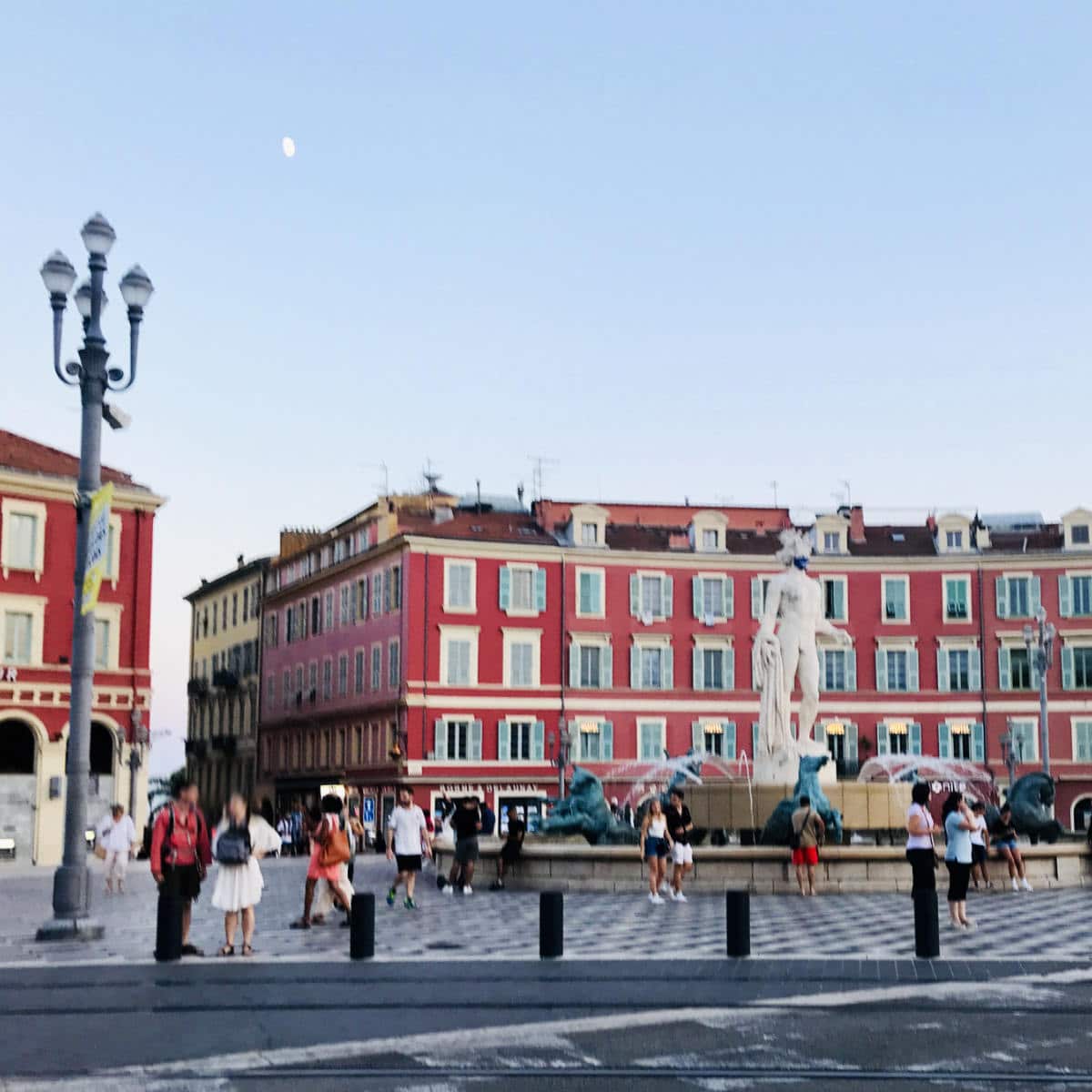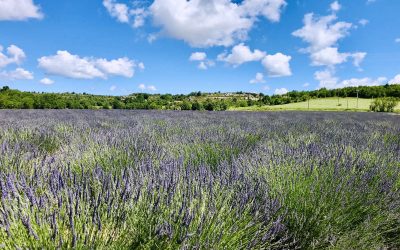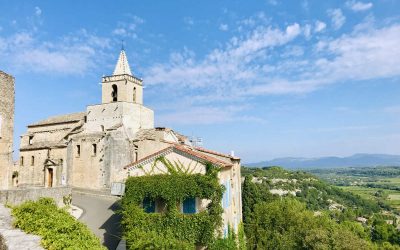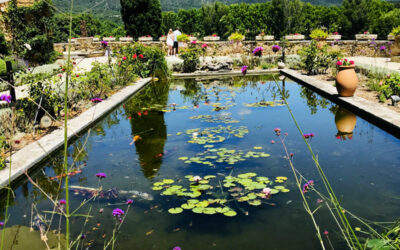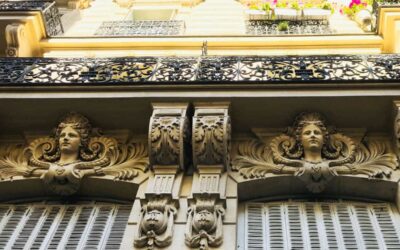Ah, Nice, the city that practically invented sunshine and effortless charm. Nestled along the glamorous French Riviera in the south of France, it is a Mediterranean city that boasts more shades of blue than a Picasso painting.
And to the French who flock to it every summer, Nice is like a fine wine, it just gets better with age. Which is quite handy given that it’s been around since the days of the ancient Greeks, just like its next-door neighbor Marseille.
But this French city was not always a part of France. Pronounced “Nee-se”, the city of Nice that been forced to change allegiances many times.
This has led to a culture, language and flag that is a mix of French and Italian, like a exotic cocktail at the beach. So let’s explore a few interesting facts about Nice, shall we? Allons-y!
- 1. The city of Nice is named after the Greek goddess Nike.
- 2. It has around 330 days of annual sunshine.
- 3. The Carnival of Nice is one of the most famous in France.
- 4. It was a favorite holiday destination of Queen Victoria and Winston Churchill.
- 5. The Promenade des Anglais is named after rich English tourists.
- 6. It is the 5th most populated city in France.
- 7. It used to be part of the Duchy of Savoy.
- 8. It became part of France in 1860.
- 9. It is part of the Provence-Alpes-Côte d'Azur region.
- 10. People here used to speak Niçard.
- 11. It has a strong Italian heritage.
- 12. A washerwoman named Catherine Ségurane is a local folk hero.
- 13. Bay des Anges is named after Saint Reparate, patron saint of Nice.
- 14. It had a Jewish Ghettos.
- 15. The flag of Nice includes a red eagle, the symbol of the House of Savoy.
- 16. La Rue Droite is one of the oldest streets in Nice.
- 17. Nice's Castle hill exploded due to a stray cannonball.
- 18. There are 3 Russian orthodox churches in the city.
- 19. The Holy Shroud of Turin used to be located in Nice.
- 20. It has some very expensive real estate around it.
- 21. The city's anthem is "Nissa la Bella".
- 22. During WWII it was occupied twice.
- 23. It has some wonderful local cuisine.
- 24. There is a cannon shot everyday at noon.
- 25. Italian general Giuseppe Garibaldi was born in Nice.
- 26. Several artists lived here during the Belle Epoque.
- 27. Even the Niçois don't agree on the recipe for Salad Niçoise.
1. The city of Nice is named after the Greek goddess Nike.
The city of Nice was named by Greek colonists that settled here in around 350BC, after defeating the the Ligurians tribe from nearby Liguria, Italy. It was given the name of Níkaia, after the Greek Goddess of victory, Nike.
It became an important trading port on the Mediterranean, along with nearby Marseille for the Greeks and later the Romans. You can read more about the history of Nice here.
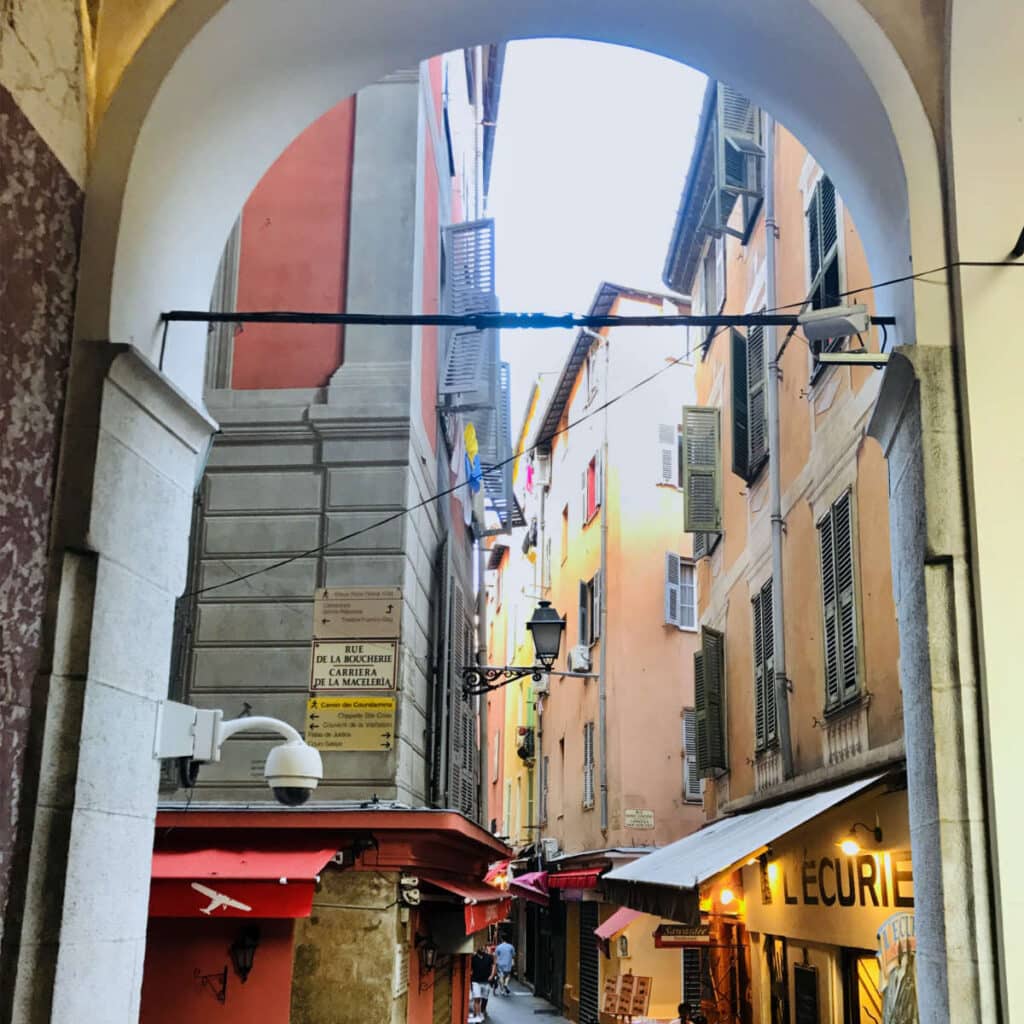
2. It has around 330 days of annual sunshine.
Nice is located on the French Riviera, an area reputed for good weather. The city of Nice itself is reputed to have around 330 days of sunshine a year, without the mistral winds that occur elsewhere along the coastline.
This makes the city one of the most popular tourist sites in France all year around.
3. The Carnival of Nice is one of the most famous in France.
The Carnival de Nice is the biggest carnival in France, held over two weeks in February. Located on the French Riviera, the parade features the city’s boardwalk Promenade des Anglais prominently. There are several events across Mardi Gras in the downtown of Nice, with the biggest highlights being:
- Carnival Parade – held during the daytime with large floats, dancers, acrobats, confetti and more
- Carnival Parade of lights – in the evening with large illuminated floats, visual animations of big screens, and fireworks
- Flower parade and the “battle of the flowers” – large floats covered with flowers and costumes models throwing flowers into the crowds.
The original parade dates back to 1873, with the flower parades being added on in 1876.
4. It was a favorite holiday destination of Queen Victoria and Winston Churchill.
Nice was very popular with European royalty from Belgium to Russia, but it became particularly popular with Queen Victoria of the UK. Already in her 80s, she visited several times between1895-99.
Initially she stayed at the Grand Hôtel in Nice, and then in the new Hôtel Excelsior at Regina Palace that was built especially with her needs in mind. Towards the end of her life, she spent more and more time on the French Riviera, spending months at a time on the Côte d’Azur.
British Prime minister also visited the area several times, especially after the war.
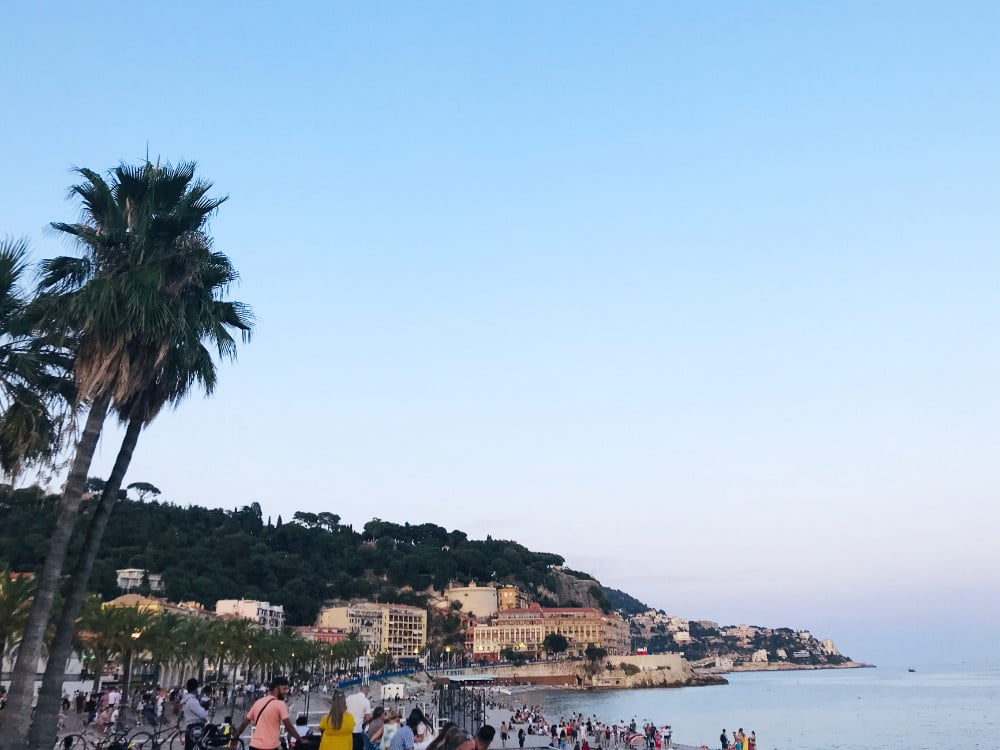
5. The Promenade des Anglais is named after rich English tourists.
At the turn of the 18th century, British doctors began prescribing what he referred to as climato-therapy. A change in climate was recommended as therapy for various ailments.
This led to a lot of wealthy British aristocrats coming to Nice. The Promenade was built in 1822 by a group of wealthy Brits who wanted a proper path to walk along the shore as part of their therapy regime.
6. It is the 5th most populated city in France.
Nice, which is pronounced “nee-se“, is the 5th most populous city in France after Paris, Marseille, Lyon, and Toulouse. It is the capital of the Alpes-Maritimes department.
7. It used to be part of the Duchy of Savoy.
After struggling against the rule of the Counts of Provence for centuries, Nice became a part of the County of Savoy in 1388. Along with the neighboring fishing village of Villefranche-sur-mer, Nice became the only port in the Duchy of Savoy on the Mediterranean.
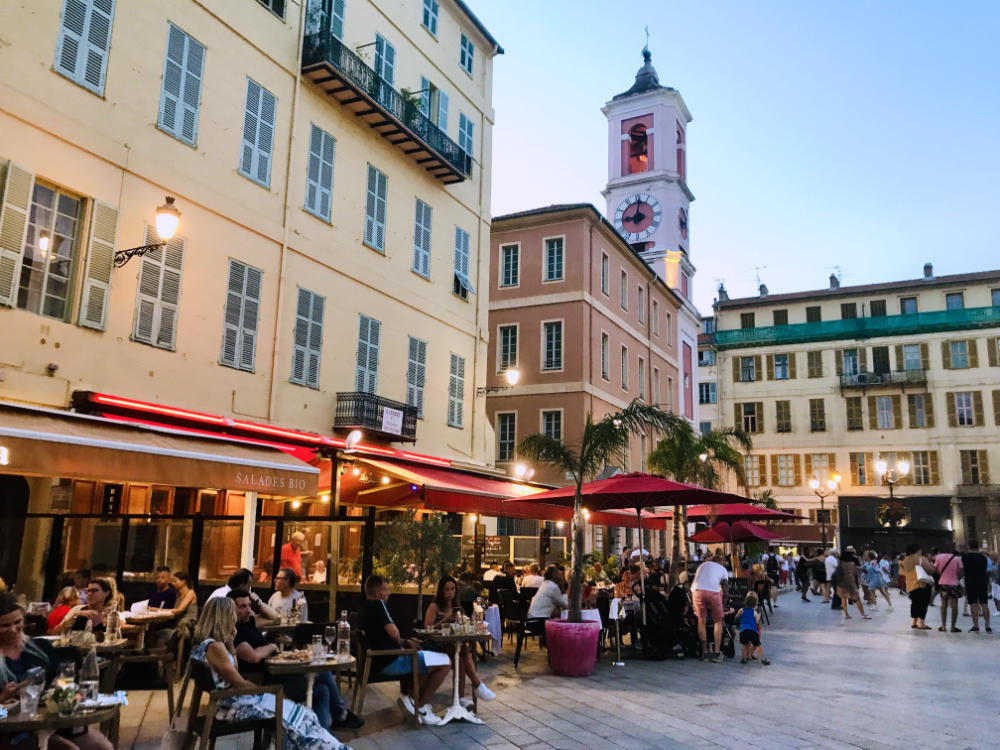
Nice thrived during this period, with new fortifications being built, and the population of the town expanding. At the time, Savoy covered much of the area around the Alps, with its capital in Chambéry.
8. It became part of France in 1860.
In 1792 Napoleon Bonaparte decided to annex Savoie on his way to conquer Italy.
After several wars and back and forth, the Duke of Savoie Victor-Emmanuel II conceded Nice and Savoie to the French in 1860 to Emperor Napoleon III (Bonaparte’s nephew) in exchange for another prize: becoming King of Italy.
9. It is part of the Provence-Alpes-Côte d’Azur region.
Located on the famous Côte d’Azur, aka the French Riviera, Nice is part of the Provence-Alpes-Côte d’Azur (PACA) region.
The region is made up from the former provinces of Provence, County of Nice, Comtat Venaissin and part of Dauphiné. (The capital of PACA is Marseille.)
10. People here used to speak Niçard.
In the past, the local Niçois used to speak a dialect called Niçard. It is a subdialect of Provençal, itself a dialect of the Occitan language.
In 1539, François I banned the use of all regional languages like Occitan and Provençale and insisted on a new language he called “françoys” (aka French) be used for all official purposes.
Although Nice was not part of France at the time but Savoy, a similar act occurred there too in 1561 where Italian was made the language of the land.
The Niçard language slowly died out all along the Côte d’Azur as more and more locals started speaking French and Italian.
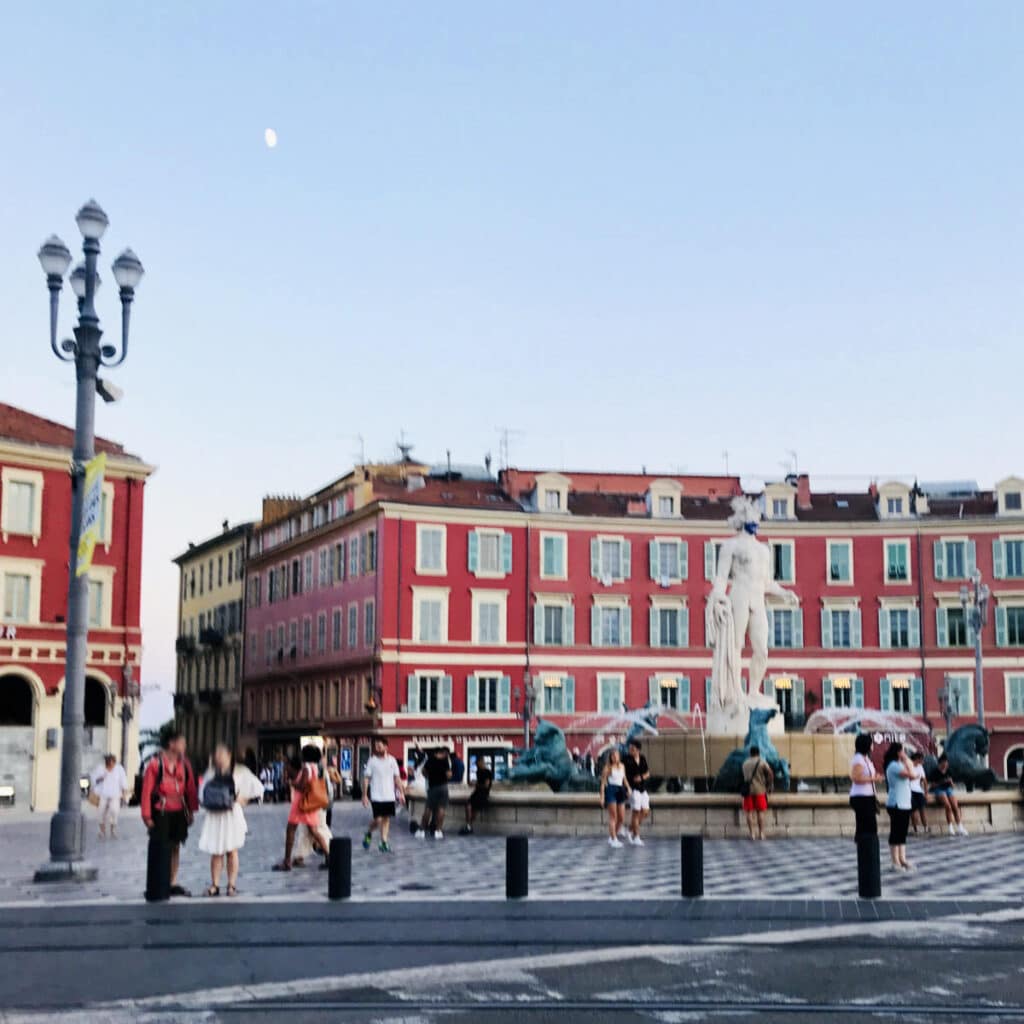
11. It has a strong Italian heritage.
As the Duke of Savoy had close ties to the Holy Roman Emperor, the cities of Savoy and in particular Nice, had a strong Italian influence.
The architecture in the old town of Nice is of Italian influence, and Italian was the language spoken. Even today, groups of locals long for a return of Nice to Italy.
12. A washerwoman named Catherine Ségurane is a local folk hero.
The legend of Catherine Ségurane was born in 1543. The city was under siege by Ottoman (Turkish) invaders allied with Francois I, the King of France.
At the time, the city of Nice was part of Savoy and was struggling to defend itself. As the story goes, an Ottoman soldier is headed up to plant their flag on the rampart of Nice’s castle, when in a rage, Catherine brandishes her washing paddle and strikes a violent blow on his head.
She then snatches his flag, breaks its pole and tears the fabric. Her act galvanizes the local Niçois and frightens the Ottomans. The locals manage to hold off the enemy until the Savoy army comes to defend them.
And such was born the legend of Catherine Ségurane. It is not clear that she actually existed, but the mythical figure of the washer woman turned local icon is celebrated annually in Nice on November 25th.
13. Bay des Anges is named after Saint Reparate, patron saint of Nice.
The long coastline of Nice is known as “Baie des Anges” or “Bay of Angels”. It is named after Sainte Réparate, a Christian martyr who is the patron saint of Nice, Florence, Pisa, and several other towns in Provence.
She was only 15 years old, when she was tortured and beheaded in 250AD. According to Christian legend, angels brought the boat containing her body from Judea to the shores of the Baie des Anges in Nice. She was then buried in the Sainte-Réparate cathedral in the city.
14. It had a Jewish Ghettos.
Jewish people have lived in Nice since the Greek era. Over the Middle ages, Jews forced to leave other parts of Europe settled in the city.
In 1430, the Duke of Savoy Amedee issued a decree, under the pressure from the bishop of Nice, forcing them to live in a specific area of the city called the “Judaÿsium”, although they were relatively free to move around.
In the beginning of the 18th century, the Duke of Savoy Victor Amédée also published a new decree, similar to the 1430 one, but much harsher. It forced Jews to live in a special district, called the Street of the Jews. They had to wear a special insigna and a yellow hat. The ghetto was closed at sunset, leading to secret passages being built to get in and out after dark.
Today, the street is called “rue Benoit Bunico”, named after a local politician who abolished the practise in the mid-19th century. The old town of Nice continues to have a strong Jewish heritage, and the city was one of the last refuges in continental Europe during the WWII.
15. The flag of Nice includes a red eagle, the symbol of the House of Savoy.
The city of Nice has a flag and coat of arms that still shows its allegiance to the House of Savoy.
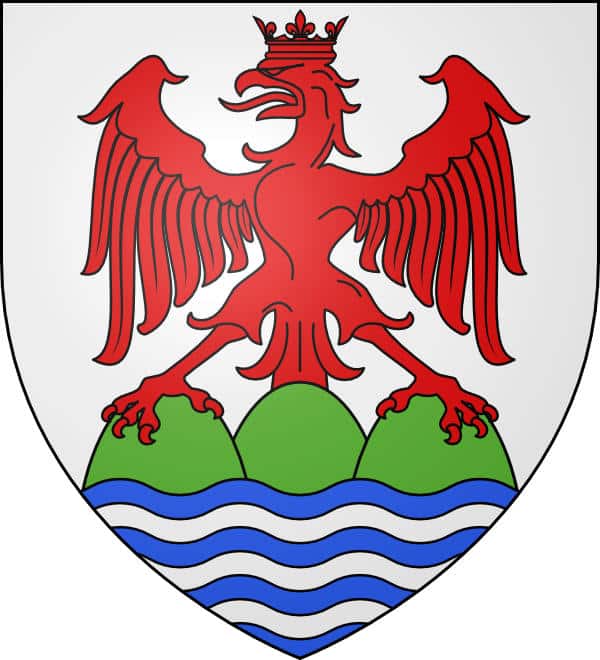
The eagle head is an imperial emblem, standing over the three hills to show Savoy’s domination over the country around Nice. The colors of silver and red is a reference to the colours of the flag of Savoy.
16. La Rue Droite is one of the oldest streets in Nice.
One of the most famous streets in Nice is the “Rue Droite“, which literally translates to “Straight road”. It is also one of the oldest streets in Nice.
It is located in the old part of Nice, and lined with small shops, art galleries, and the Musée du Palais Lascaris.
17. Nice’s Castle hill exploded due to a stray cannonball.
Unlike most large towns along the coast of France, Nice does not have a large visible castle. That is because the Castle of Nice was dismantled.
Built in the 11th century, the military citadel sat on a large rock overlooking the Baie des Anges. It suffered several sieges, notably in 1543 by François I and 1691 by Sun King Louis XIV.
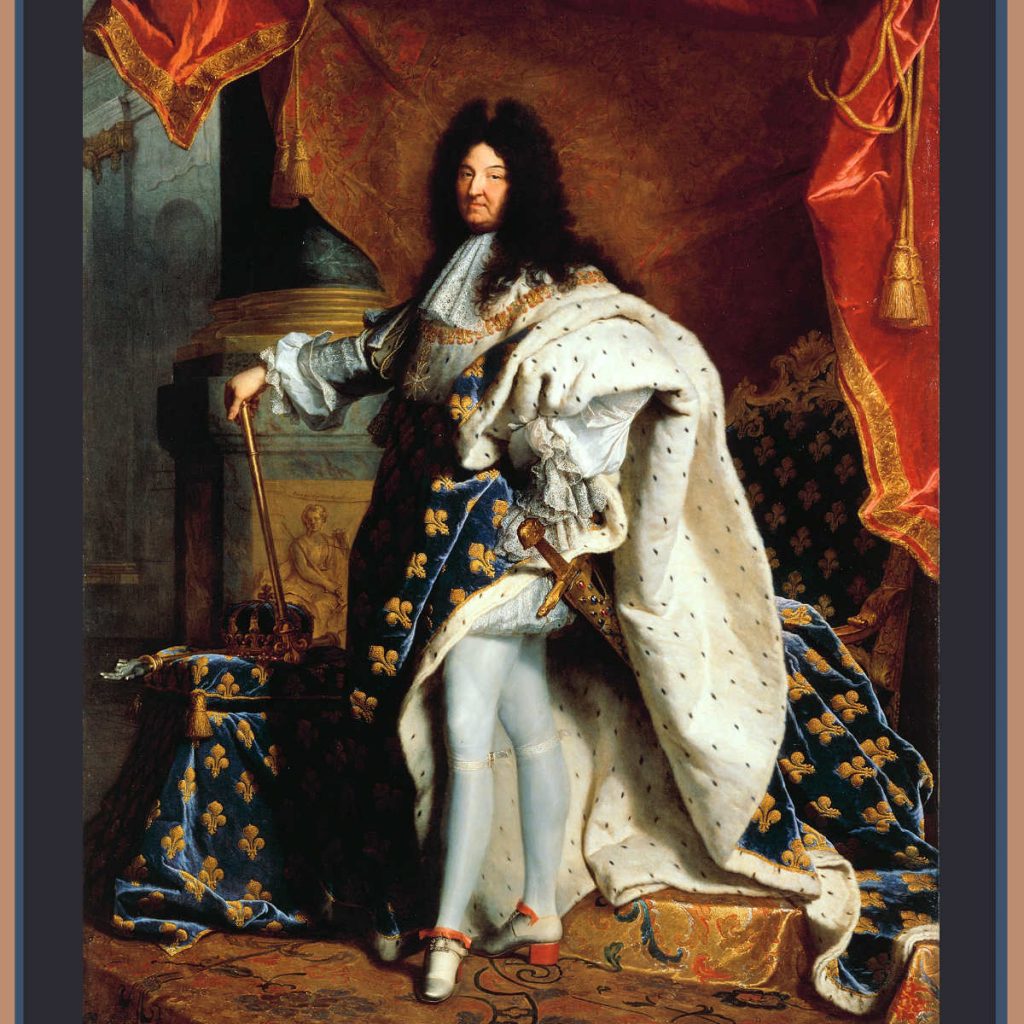
When Louis XIV had to come back with his troops in it 1705 to lay seige again, he was fed up. By pure luck, a cannonball fired over the fortress walls fell in the munitions depot via a small window, setting off a huge explosion that destroyed the side of the castle.
The Château de Nice was in ruins by the end of the war. To ensure that Louis would not have to lay siege yet again, he ordered it destroyed. Some of the stones used to pave the Promenade des Anglais, come from the original Château de Nice.
18. There are 3 Russian orthodox churches in the city.
Along with English tourists Nice also regularly attracted members of the Russian aristocracy. In 1864, Russian Tsar Alexander II visited by train and was attracted by the pleasant climate.
Thus began an association between Russians and the French Riviera that continues to this day.
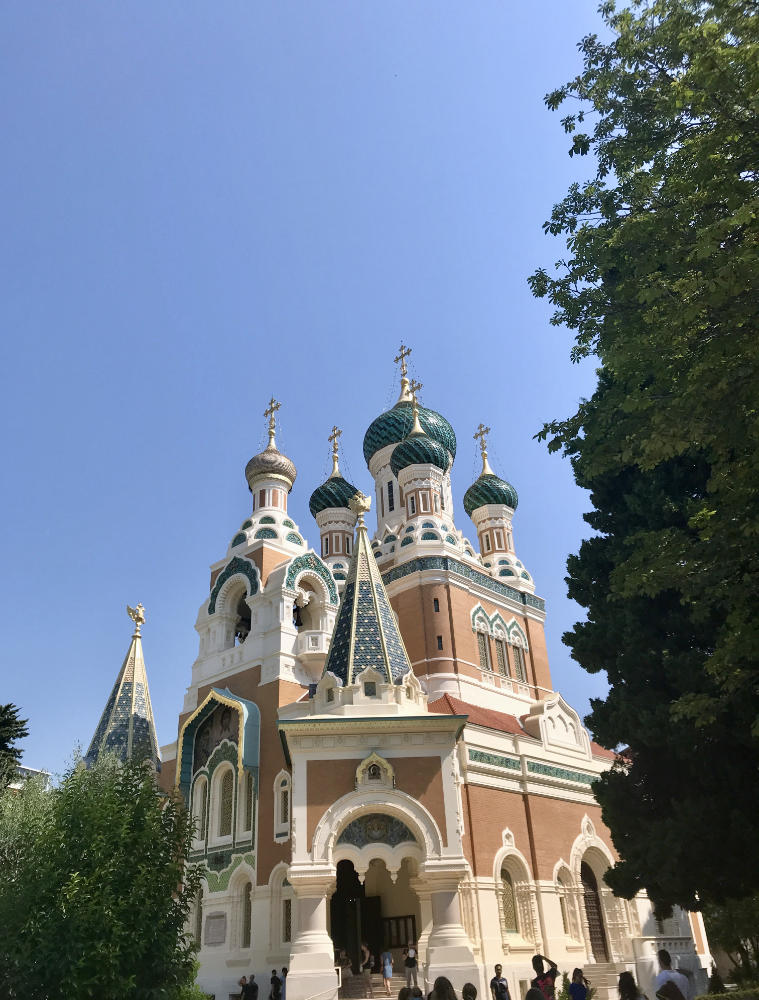
The Russian Orthodox Cathédrale Saint-Nicolas was consecrated in December 1912 in memory of Tsar Nicholas Alexandrovich, an heir apparent to the Russian throne, who died in Nice at the age of 21, while on an European tour.
It was funded by Tsar Nicholas II, who would end up being the last Tsar of Russia, and today is one of the most intriguing churches in France.

After 1917, Communist revolution, the Paris-based Russian Orthodox church assumed control of the Nice Cathedral. However, after a long legal dispute, a French Court ruled in 2010 that the property on which the Cathedral is built belongs to the Russia.
Two other Russian Orthodox churches, the First Russian Church and Chapel Tzarewitch (Tsarevich) were also built by Russian royalty in Nice, and are still standing today.
19. The Holy Shroud of Turin used to be located in Nice.
In the Middle ages, the famed “Shroud of Turin”, was actually not in Turin at all. It became property of the Duke of Savoy, and was moved to his capital in Chambéry in 1452.
After a fire, it was moved to Nice where it was kept for 7 years from 1536 to 1543, before being returned to Chambéry. The Savoy capital was moved to Turin in 1562, and hence the shroud moved to Turin in 1578 in a specially built church, where it remains.
However, the Chapel of the Holy Trinity and Holy Shroud still stands in Nice today.
20. It has some very expensive real estate around it.
The area around Nice has some of the priciest real estate in all of France. From Cap Ferret and Villemanche-sur-mer, luxury villa line this part of the Côte d’Azur.
Slightly further, you will find the towns of Cannes, St. Tropez, Antibes, Eze, and the principality of Monaco.
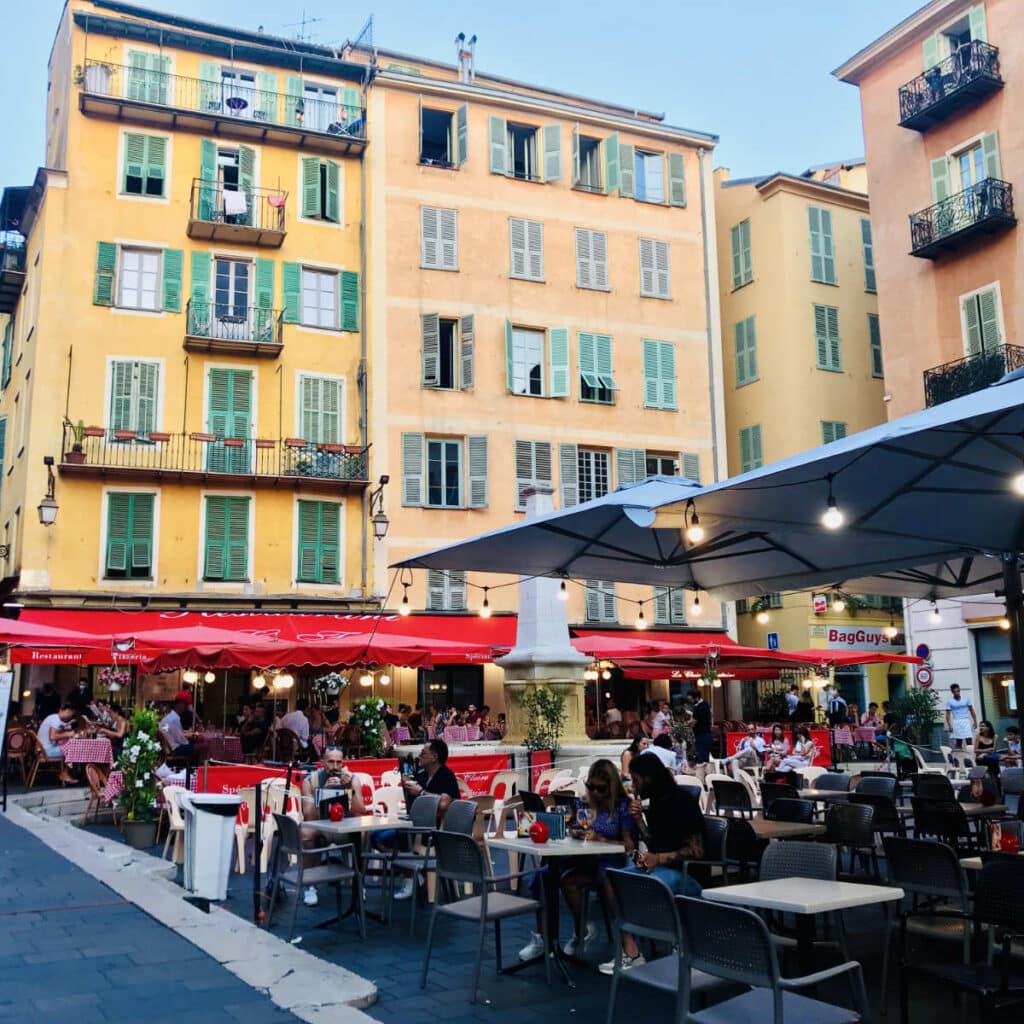
21. The city’s anthem is “Nissa la Bella”.
Dating back to 1903, the unofficial anthem of Nice is the “Nissa la Bella” which is in the Niçard language.
If you go to a football (soccer) game of OGC Nice, you will hear fans give full voice to the song.
| Original lyrics | English Translation |
|---|---|
| Viva, viva, Niça la Bèla Ò la mieu bèla Niça Regina de li flors Li tieus vielhi teulissas Ieu canterai totjorn. Canterai li montanhas Lu tieus tant rics decòrs Li tieus verdi campanhas Lo tieu gran soleu d’òr [d’aur] | Live, Live, Beautiful Nice O my beautiful Nice, Queen of all the flowers, Your old rooftops, I will always sing! I will sing the mountains, Your rich sceneries, Your green countrysides, Your large golden sun [sunshine]! |
| Totjorn ieu canterai Sota li tieus tonèlas La tieu mar d’azur Lo tieu cièl [cèu] pur E totjorn griderai En la mieu ritornèla Viva, viva, Niça la Bèla | Always I will sing Underneath your arbours Your sea of azure And your skies pure, And always I will proclaim In my ritornello: “Long live, long live Nice the Fair! |
| Canti la capelina La ròsa e lo lillà Lo Pòrt e la Marina Palhon, Mascoinà ! Canti la sofieta Dont naisson li cançons Lo fus, la colonheta, La mieu bèla Nanon. | I sing the capelina, The rose, the lilac, The port and the Marina, Paillon, Mascouïnat! I sing the garret Where the songs are born, The spindle, the small distaff, My beautiful Ann! |
| Canti li nòstri glòrias L’antic e bèu calen Dau donjon li victòrias L’odor dau tieu primtemps! Canti lo vielh Sincaire Lo tieu blanc drapèu Pi lo brèç de ma maire Dau monde, lo plus bèu | I sing our glories, The antique Roman lantern, The victories of the castle, The scent of Spring’s return! I sing the old Sincaire, Your white flag unfurled, And the cradle of my mother The most beautiful in the world! |
22. During WWII it was occupied twice.
During WWII, Nice became a city of refuge for many displaced foreigners, notably Jews fleeing persecution. From Nice many sought further shelter in the French colonies in Africa as well as North and South America.
The city was invaded twice. First it was invaded by the Italians, allies of the German Reich, before being invaded by the Germans themselves. American paratroopers entered the city on 30 August 1944 and Nice was finally liberated.

23. It has some wonderful local cuisine.
There are many dishes that originated in Nice, that are today very popular all across France, such as:
- Socca flatbread – an appetizer that is a type of flatbread made from chickpea flour.
- Panisse – similar finger food to the socca, also made from chickpea flour.
- Salad niçoise – the traditional salad (which has a very specific list of ingredients!)
- Ratatouille – a slow-cooked vegetable stew featuring an assortment of local vegetables, such as eggplant, zucchini, peppers, and tomatoes.
- Pissaladière – an appetizer that is a type of pizza made with caramelised onions, black olives, and anchovies.
- Pan Bagnat – basically a salad niçoise inside a sandwich. A common dish for a quick lunch in this part of the Riviera.
- Farcis niçois – vegetables (peppers, eggplant, or squash) stuffed with meat, cheese and herbs, and topped with breadcrumbs.
24. There is a cannon shot everyday at noon.
Precisely at noon everyday, a cannon is shot in the city of Nice. The story dates back to a retired Scottish soldier and his wife who were living in the city for several months every winter.
As the story goes, it was 1861 when Scottish lord Thomas Coventry-More got into an argument with his wife for coming home late and not having his lunch ready.
Every morning she would go out for a stroll, meet other British ladies, and spend hours gossiping about what was happening around the French Riviera. Tired of having his lunch prepared late, army retiree Thomas asked the locals to fire a cannon every day at noon so that his wife would hear it and come home.
He paid for it for years, until the couple finally stopped coming because of old age. However, by that time the local Niçois had gotten used to it, and decided to pay for the cannon themselves. These days, it is a firework and non a cannon, but the sound is similar.

25. Italian general Giuseppe Garibaldi was born in Nice.
The 19th century hero of a united Italy, famed General Giuseppe Garibaldi was actually born in Nice. At the time, a unified did not exist, and Nice was part of the House of Savoy and the Kingdom of Sardinia was no exception.
It was Garibaldi’s dream to one day have a unified Italy. He led a force of a volunteers to aid in the fight for a united nation of Italy.
Although he and his army triumphed, in the agreement between Napoleon III and the King of Sardinia, Nice was part of the territory ceded to France in exchange for other territories.
Hence Garibaldi’s statue in Nice has a rather sad expression as it faces in the direction of Italy.
26. Several artists lived here during the Belle Epoque.
From Henri Matisse to Marc Chagall, some of the top French artists in the world have lived in Nice. Matisse lived in a hotel for a while (the same hotel as Queen Victoria), but eventually moved into his own premises.
Marc Chagall owned a home in Nice, which today is a museum featuring his works.
27. Even the Niçois don’t agree on the recipe for Salad Niçoise.
The salad niçoise is one of those recipes that even French chefs can’t agree on. Green beans and potatoes? Tuna or anchovies? And mayonnaise!?
The biggest controversy is over the green beans and potatoes. Over the years, several famous French chefs have weighed in on the topic.
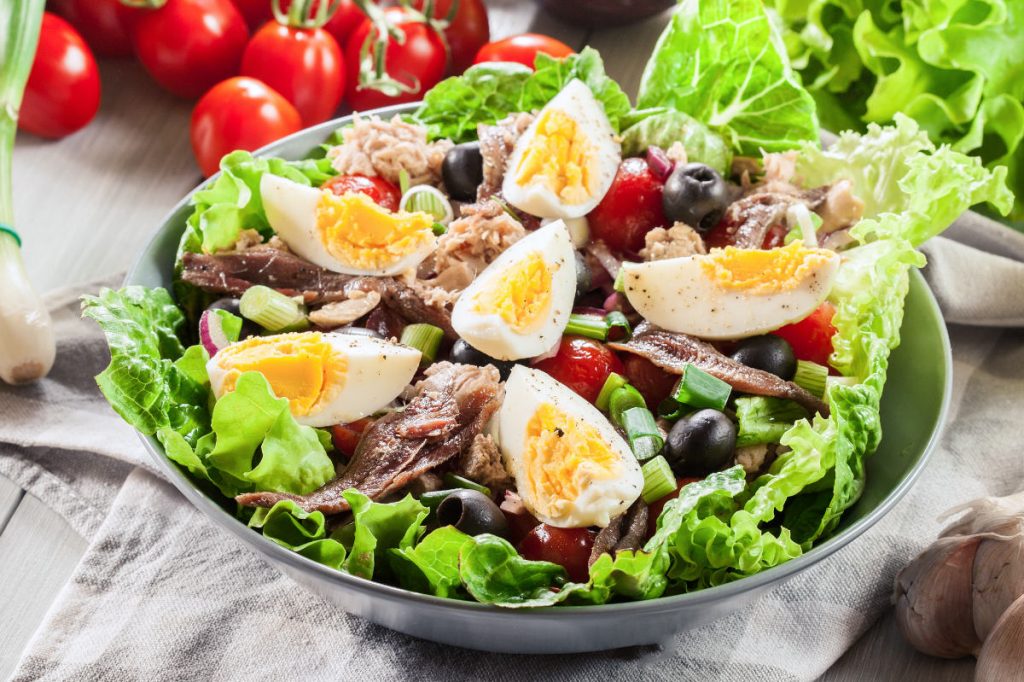
Former Nice mayor Jacques Médecin proclaimed in his 1970s cookbook: “never, never, I beg you, include boiled potato or any other boiled vegetable in your salad niçoise.”
You can get the traditional salad niçoise recipe here and see what the controversy is all about.

If you enjoyed that article, you may like to read more facts about France here. A bientôt!
